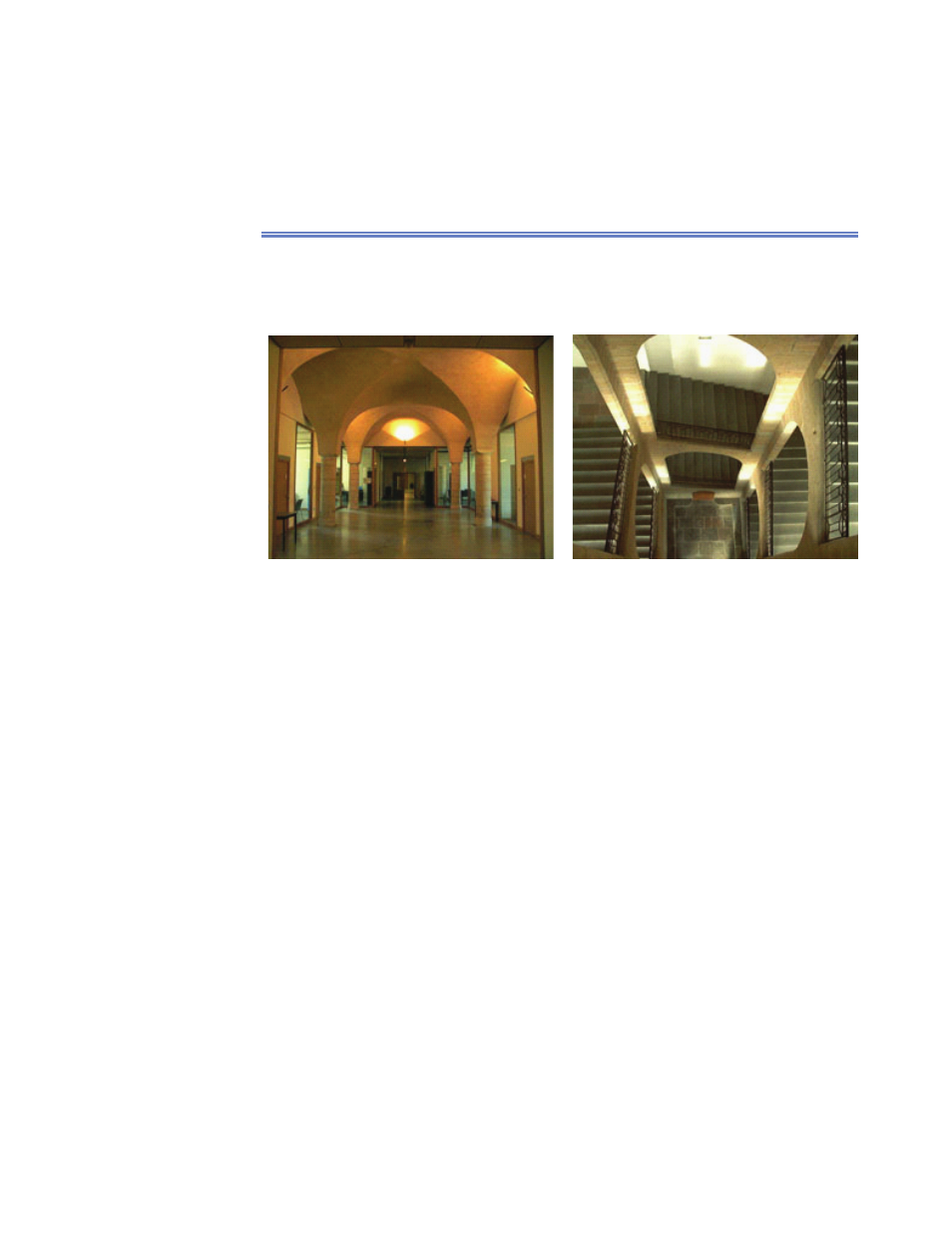K.6 subsystem: indoor distribution – Retrotec USACE User Manual
Page 398

K10 ENERGY & PROCESS ASSESSMENT PROTOCOL
The facades of old buildings may have historical and architectural value.
Specifi c constraints and regulations have to be respected before the applica-
tion of energy conservation measures regarding windows.
K.6 Subsystem: Indoor Distribution
The indoor environment quality results from interactions between an outside
subsystem (“environment and site”) and an inside subsystem (“indoor distribu-
tion”) (Figure K7).
Figure K7. Complex indoor distribution (horizontal and vertical) with stone arches.
The indoor distribution of an old building is a system with bioclimatic prop-
erties. It supports the thermal behavior of the building in winter and summer
with a specifi c design: orientation of rooms and spaces, distribution typology
(crossing area or not), and size of the rooms according to their use.
In many old buildings, some characteristics infl uencing energy behavior
are identifi ed:
Room’s distribution: there is a separation of living rooms and service
■
rooms. They tend to be laid out according to the path of the sun: living
rooms on the sunny side, and service rooms on the colder side.
Thermal buffer spaces: back kitchens, cellars, storerooms, and roofs are
■
like many additional spaces, which constitute thermal attenuation zones
limiting heat transfers with the outside.
Old buildings are designed with a crossing type. Without HVAC equip-
■
ment, the air ventilation strategy is natural ventilation. Thus, a crossing
building makes it possible to create an effective airfl ow to improve the
indoor air quality.
The indoor distribution is characterized by heavy components inside old
buildings: partitions made of brick or stone, heavy fl oors, and so forth. This
inside mass supports the thermal inertia. The higher thermal inertia of a wall is
able to store and restore large thermal fl ows in winter or in summer.
